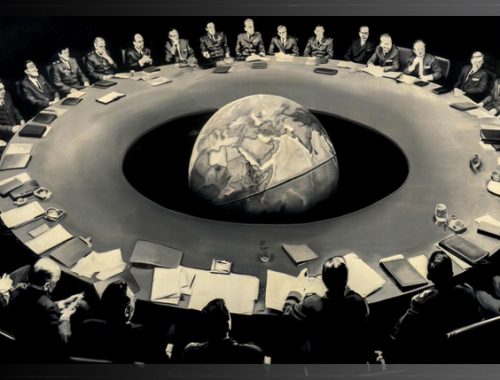
HADITHS AND SUNNA
In Chapter 2 of this book we saw that the Quran was a self-sufficient source for Islam and that there was no need for any additional source. In this chapter we shall be studying the way the hadiths were collected and assembled. The hadiths were not dictated by the Prophet and were not intended to be shaped into book form. Consequently, it cannot constitute a companion volume to the Quran. With reference to their self-contradictory and illogical character, and their inconsistency with the Quran, we shall refer you to Chapters 6, 7 and 8.
The literal meaning of hadith is ‘word.’ It means primarily a communication or narrative in general whether religious or not, and it has the particular meaning of a record of actions or sayings of the Prophet and his companions; while the word Sunna means ‘path followed, trodden path, custom.’ According to the usual explanation, Muhammad’s sunna comprises his deeds and sayings as well as his unspoken approval. (For the use of the concept of sunna, see Chapter 16.) The sunna that the Quran refers to will also be examined in this chapter. The words hadith and sunna are often used interchangeably in nearly all publications since patterns of behavior are expressed in words. For instance, Dr. Subbi es Salih, from the University of Lebanon, explains this in the following manner: “The experts on traditions have acknowledged that hadith and sunna have been interchangeably used in books. Both concepts refer to a word, an act, a statement or an attribute of the Prophet.” This is also applicable to the present book.
We propose to go back to the days of the Prophet before starting to examine the hadiths and return to our own day. The hadith scholars themselves admit that the Prophet did not allow scribes to take down his sayings. Two authoritative books on hadiths, Muslim and Musnad by Ýbni Hanbal, founder of the Hanbali religious sect, make the following comment: “Take down nothing other than the verses revealed. Anyone that may have written any of my sayings, let him destroy it” (Muslim, Sahih-i Muslim Kitab-ý Zühd, Hanbal, Musnad). The hadith quoted by Darimi is as follows: “The companions of the Prophet asked him permission to take down his sayings. They were refused” (Darimi, es-Sunen). The hadith transmitted by Alm Hatib is as follows: “While we were engrossed copying the hadiths, the Prophet came and asked what we were doing. We are copying your sayings, we replied. Is your intention to create a book other than God’s Book? People that preceded you swerved from the straight path because they dared write books other than God’s Book” (Al Hatib, Takyid). And Tirmizi had this to say: “We asked permission to copy the sayings of God’s messenger, but he refused to give it” (Tirmizi, es-Sünen, K. Ilm).
In books on hadiths and in books claiming to be the source of the established religion, it is explicitly acknowledged that the Prophet had prohibited the copying of his sayings, and the reason was to prevent the mixing up of the verses of the Quran with his own sayings. According to the traditionalists, the hadiths should have as much authority as the Quran; they are suggested to be the source of religion as much as the Quran. If this is so, in fact, how come then the Prophet prohibited the copying of his sayings? Why did he tolerate gaps that were likely to occur in the revealed religion, the adulteration of his sayings during the process of their transcription, or the omission of his words? The Quran speaks of copying with the use of pen, of committing to paper one’s will and debts owed. This being the case, is it possible that the Prophet should prohibit the transcription of his sayings were they to be considered another source of Islam? Had he forestalled the copying of a source of religion, wouldn’t he have been instrumental in causing Islam to remain incomplete? As we shall be seeing in the forthcoming pages, the number of contrived traditions is considerable. Had the hadiths constituted another source of Islam, the Prophet would certainly have dictated them and spared the interpolation of an infinite number of sayings reported to have been uttered by him. As far as the source of Islam is concerned, we well know that the Quran is self-sufficient. The first person who was aware of this fact was the Prophet himself. Committing traditions to paper was far from being his wish. The Prophet, who was well advised in every respect, had banned the copying of his sayings as he knew that the human character was inclined to idolize prophets and was liable to sow dissension. Today, we are in a position to appreciate once more the foresight of the Prophet. The very fact that he had forbidden the transmission of his sayings is enough to convince those who are wary.
PAGE 2: MULTIPLICITY OF HADITHS
PAGE 3: HAD THE HADITHS BEEN A SOURCE OF ISLAM, THE RELIGION WOULD HAVE BEEN INCOMPLETE
PAGE 4: HOW DID THE HADITHS WHOSE COPYING WAS PROHIBITED BY THE PROPHET TAKE THE SHAPE OF BOOKS?
PAGE 5: ARE COMPANIONS OF THE PROPHET FREE FROM ERRORS?
PAGE 6: MEANING AND METHOD OF TRANSMISSION OF HADITHS
PAGE 7: CHAIN OF TRANSMITTERS OF THE HADITHS
PAGE 8: WE ARE NOT THE FIRST TO ADD WEIGHT TO THESE ARGUMENTS
PAGE 9: REVELATIONS
PAGE 10: SALMAN RUSHDI’S SATANIC VERSES ARE ACTUALLY SATANIC HADITHS
PAGE 11: THE QURAN COMMENTARIES IN THE MARKET
PAGE 12: WHICH HADITH WILL THEY BELIEVE NOW?
PAGE 13: HADITHS ABOUT WHICH THERE IS NO DOUBT AS TO AUTHENTICITY
PAGE 14: OUR AIM IS TO PREVENT PEOPLE FROM DEVIATIONS
You May Also Like

SO-CALLED APOCALYPTIC SIGNS: SECOND COMING, MAHDIS
8:59 pm
THE QURAN AND GOVERNMENT
6:30 pm

